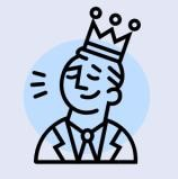
Maths (3)
Subject: Maths
Topic: Mental methods addition, subtraction, multiplication, division, comparing, calculations
Question: Who killed King Ted?
Author: Anne de A’Echevarria
Description
Who Killed King Ted? is a typical 'whodunnit' complete with suspects, motives and a possible twist - was King Ted, in fact, killed at all?!
Although the mental arithmetic involved requires precision, the task is open minded and provides scope for pupils to come up with and justify more than one possible solution.
The mystery involves mathematical concepts such as capacity, time, distance and speed, and could be used diagnostically within the maths curriculum to assess pupils' confidence in recognising and applying these concepts.
Key learning objectives might include:
- to practise mental methods in addition, subtraction, multiplication and division in order to solve the problem, deciding which operations and methods to use
- to compare and calculate different measures, involving: money in pounds and pence, capacity (ml), and distance over time (mph).
Audience: KS2
Subject: Maths
Topic: Addition, subtraction, multiplication, division, multi-step problem, averages
Question: Should Trev hire the new machine or stick with the old one?
Author: Anne de A’Echevarria
Description
Trev is the boss of a Robot Packing Factory on planet Triffen. He has been having some trouble with his Robot Packing Machine and decides to compare its profitability with that of a brand new one. He’s finding the calculations a little tricky, so KS2 Maths students are invited to help him out. The problem involves addition, subtraction, multiplication and division, including the calculation of averages. The reliability of statistics and data can also be considered.
While students must make accurate calculations and solve multi-step maths problems, the answer to Trev’s problem is open-ended.
‘Trev the Triff’ could be used diagnostically within the maths curriculum to assess pupils’ ability to decide which operations and methods they need to use to solve a multi-step problem, as well as their confidence in working together to explore and justify their ideas.
At each level (basic, standard, advanced) an added cost to Trev is brought in. For example, in the medium set of slips, students are introduced to the fact that the machines need staff to operate them. Although these extra considerations allow differentiation and therefore change the overall numbers involved, what the students’ decision is based on doesn’t change. This means the whole class can still be engaged in the same story together.
Depending on abilities, and which level is chosen, we recommend that this mystery can be used with Year Five but also top set Year Four.
Original images of 'Triffs' come from www.awaywiththepixels.com
- To solve a multi-step problem, deciding which operations and methods to use and why;
- To add and subtract numbers up to 4 digits either mentally or using a written method;
- To use place value, known and derived facts to multiply and divide mentally, including dividing by 10, multiplying together three numbers, and calculating averages.
Audience: KS2
Subject: Maths
Topic: Addition, subtraction, multiplication, division, fractions, percentages, statistics, measurement
Question: Did Captain Quint and his crew make it round the world in 50 days?
Author: Anne de A’Echevarria
Description
This mystery maps to the maths curriculum. Specifically:
- Number – addition and subtraction
- Number – multiplication and division
- Number – fractions (including percentages)
- Statistics
- Measurement
Although the calculation involved in Captain Quint requires precision, the task is open-ended and provides scope for pupils to come up with and justify more than one possible scenario.
The mystery will challenge pupils to decide and justify to each other, which operations and methods they need to use to solve a multistep problem. As well as addition, subtraction, multiplication and division, some calculations also involve fractions and knowledge of percentage and fraction equivalents. Pupils will need to interpret information in tables, graphs and maps and be able to compare and calculate different measures, involving capacity and distance over time.
It could be used diagnostically within the maths curriculum to assess pupils’ confidence in recognising and applying these concepts.
There are three difficulty levels to this mystery. Easy has 20 slips, medium has 25 slips and hard has 26. As a guide, we suggest it is most suitable for 10-11 year olds.
Learning outcomes:
- To add and subtract numbers both mentally or with a calculator (as appropriate); to multiply and divide numbers up to 4 digits by one- or two-digit numbers using a formal written method, calculator or mentally (as appropriate) – all within a multi-step problem, deciding which operations and methods to use and why.
- To multiply proper fractions by whole numbers; use knowledge of percentage and fraction equivalents.
- To read and interpret information in tables and graphs including calculating and interpreting the mean as an average.
- To compare and calculate different measures, involving capacity (ml), and distance over time (mph/knots).rate their own unique, yet easy to remember passwords



